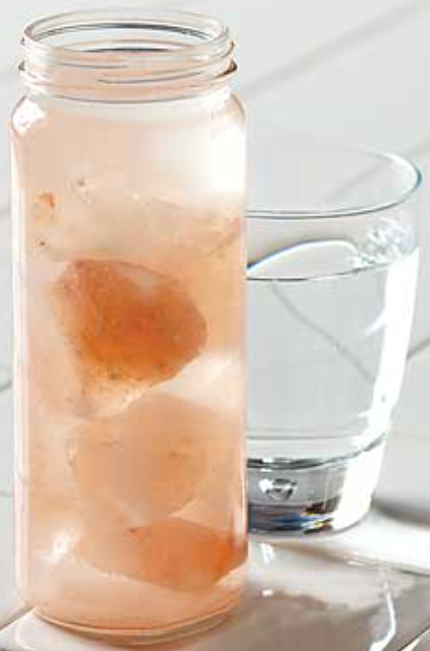I am a huge fan of Solé Water.
I find many patients are depleted in basic minerals like zinc, potassium, magnesium, and even iodine. Deficiencies in these basic minerals can lead to cramping, dizziness, twitchy muscles, and chronically low blood pressure.
When you need a quick simple way to rehydrate your body, improve mineral load, and build blood volume, this is a favorite amongst my patients and works quickly!
What is SOLÉ WATER?
Himalayan saltwater, also popularly known as solé water, is basically water that has been fully saturated with salt.
Everyone believes coconut water is the most efficient rehydration fluid behind Pedialyte, however solé water can be just as effective.
SALT = Sodium and chloride combined. These two electrolytes combined into water give our cells life, assist with detoxification and reduce inflammation. If you’d like to read more about the importance of sodium chloride, read Linus Pauling’s in depth article.
I recommend consuming your solé water in the morning & definitely by midday. You can also use solé to help rehydrate your body after exercise or on hot days to replace the water and electrolytes lost in sweat. For deeper depletion, I advise drinking daily over the course of 2-3 months.
Benefits:
Keeps the body energized & hydrated: Solé water contains the necessary electrolytes that give you the required minerals to function and also keep your stress system down and energy levels up.
Easily absorbed Minerals: Himalayan salt is rich in many trace minerals and having it in the form of solé water makes the absorption of these minerals in the body easier
Good to know before you begin:
The key is to make your concentrated solé tonic hyper-saturated by dissolving large natural, minimally processed rock salt into water until the water cannot absorb more. Using fine grain is totally possible, but is messy.
While many patients get excited and try to drink the solé tonic straight, please don’t do this! Your mouth and lips will be very unhappy. It’s best mixed with larger amounts of water.
Here’s how to make it!
Ingredients
· 4-5 blocks large ancient sea salt or Large unrefined crystal salt( Himalayan or Celtic)
· 6-10 ounces water
Equipment
· Glass Mason Jar ( pint-sized) with a plastic lid. You can recycle old supplement bottles or peanut butter jars, just make sure it’s glass. Metal lids will rust from salt contact over time.
Preparing the solé tonic.
· Place 4-5 salt crystals into a pint-sized glass jar. If you are using smaller crystals, add enough salt to fill half the volume of your glass jar.
· Fill your jar with filtered water, then seal the jar with a plastic or other non-metal lid.
· Let the salt dissolve for at least 48-72 hours. The crystal will dissolve but remain visible after 24 hours. Wait until the salt has fully hyper-saturated the water. If the salt crystals have NOT dissolved completely, add another salt crystal and allow it to saturate in the water for another 24 hours.
Get ready to use the solé tonic!
Once your supersaturated solé tonic is ready for use, uncover the jar, stir the water, and then measure 1 tablespoon of solé tonic into a 32 oz bottle of water, mix well and drink from morning until afternoon.
You’ve just made medicinal solé water!
Pro-Tips!
If a tablespoon is too much initially, lower it to one teaspoon and build your way back up over time.
Add a squeeze of lemon or lime juice. It’ll give a refreshing zing to your water, as well as a dose of vitamin C.
You can always use this solé tonic to make bone broths or make large batches of soups or stews- it’ll enhance the mineral density tenfold!
Store it away in a dark cool area until ready for use daily.


